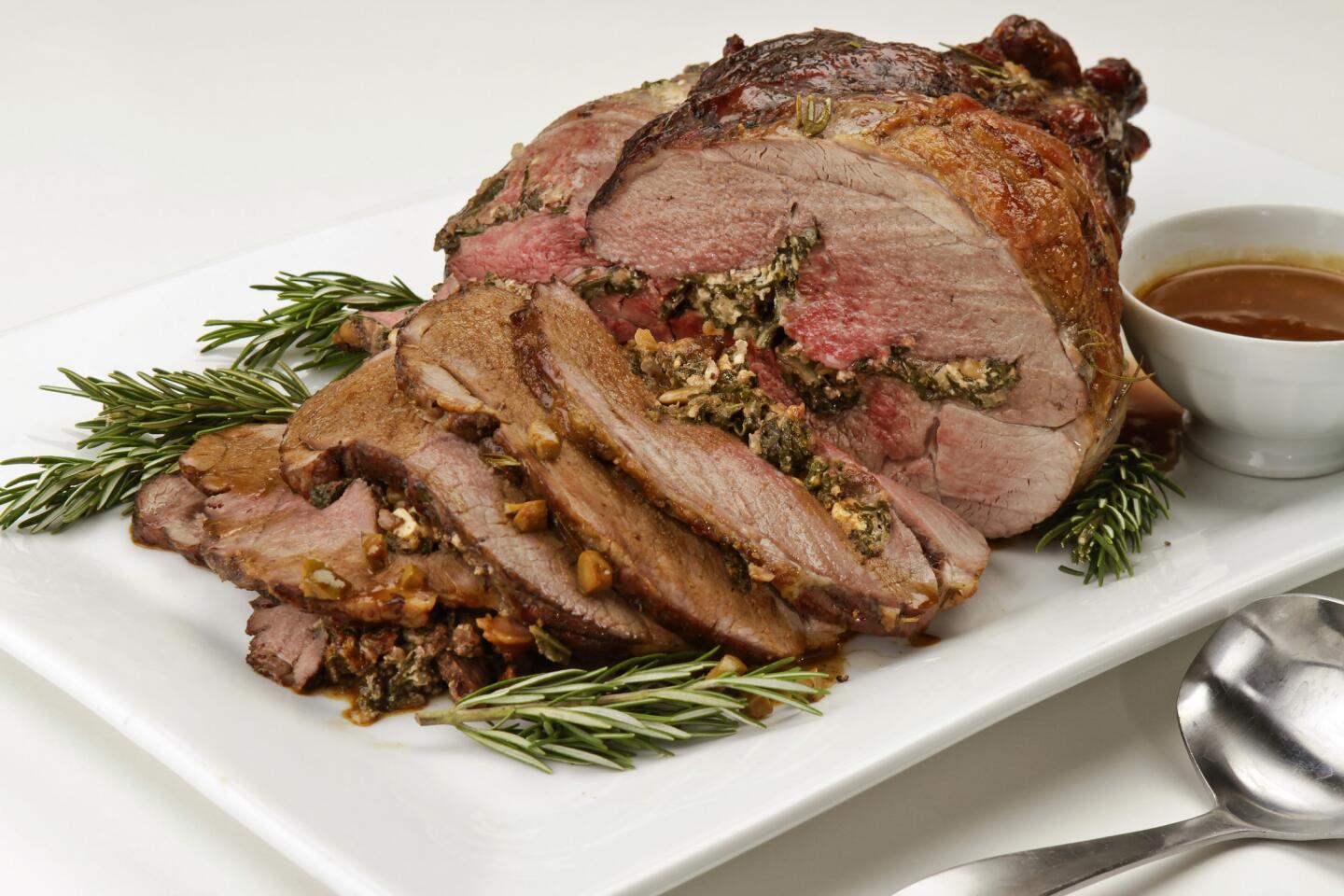Good for what ails you, 12 recipes for winter cooking greens
- Share via
Some vegetables are born to be stars; others are best suited to ensemble roles. There’s no better example of this than winter’s hardy cooking greens, a mainstay of farmers’ markets at this time of year.
While you can cook mustards, chards, collards, kale and even the leafy parts of turnips and beets individually, they’re best prepared en masse or, as your momma might have said, “in a mess.”
Taken one at a time, each of these greens has something to recommend it. But cook them together and the result is extraordinary. The flavor of mixed greens is full and deep rather than sharp and pointed. Cook one type of green and you’ve got an oboe solo. Cook a mess and you’ve got an orchestra.
Moreover, I feel confident in reporting that greens are not only delicious, they have the power to heal. When I’m feeling beat-down, peckish, fluish or even just a little mulish, there’s nothing that restores my equilibrium like a bowl of greens.
Once the outcasts of the vegetable world, winter’s cooking greens have suddenly become the belles of the ball. Whether you’re talking about the Brussels sprouts and kale that are showing up on every gastropub menu (sometimes several times each), or formerly disdained dandelions, mustards and collards, these tough, sometimes bitter greens are fashionable.
It’s little wonder, really. With our appreciation for big, powerful flavors, greens fit right in. They’re hearty enough that they can carry the meal in a vegetarian entree, but they also pair well with rich, fatty flavors such as bacon.
How to choose: Greens should be rigid and firm with absolutely no sign of wilting. Any black spots are signs that the leaves are breaking down.
How to store: Keep greens chilled in the crisper drawer of the refrigerator in tightly sealed plastic bags. For extended storage, slip a dry paper towel into the bag to absorb any excess moisture.
How to prepare: Trim away any leaves that are wilted or show damage. If the leaves have tough stems (kale, mustards, collards, etc.) trim those away as well. Most winter greens reward longer cooking, with the exception of Brussels sprouts and other cabbage relatives (they’ll turn stinky and sulfurous, so cook them briefly).
Are you a food geek? Follow me on Twitter @russ_parsons1
More to Read
Eat your way across L.A.
Get our weekly Tasting Notes newsletter for reviews, news and more.
You may occasionally receive promotional content from the Los Angeles Times.

















